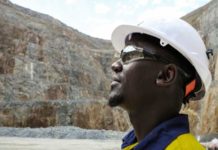
[miningmx.com] — A STATEMENT, alarmist in tone, by a French computer consultancy wouldn’t normally give pause to the mining fraternity; not unless, of course, it was about the security of future energy supplies.
But that is what’s occupying the minds of analysts at Capgemini who, in an article published by Reuters today, claim the decommissioning of nuclear power in Europe could raise the risk of the lights not coming on in certain countries this European winter.
France normally imports electricity from Germany, especially in winter. However, Germany may not be able to afford to export much power in the future given its decision to decommission nuclear power sources in response to the risks posed following the Fukushima disaster.
At the very least, the Eurozone may become dependent on imports of Russian gas which currently constitutes 30% of power supply in the bloc – a reliance that could become 50% by 2030, says Capgemini.
“Keeping the lights on” has become such an oft-uttered slogan at Eskom that I thought our power utility had exclusively repurposed the phrase to mean anything connected with energy security.
Yet a visit to the Madrid coaltrans World Coal conference last week has provided ample evidence that many apparently South African problems, especially related to energy and infrastructure, politics and permitting, are in fact global ones.
It was an eye-opener to hear Kevin Crutchfield, CEO of Alpha Natural Resources, the world’s fifth largest coal producer, complain publicly and bitterly about the “train wreck” of regulation out of Washington, especially under the Obama Administration.
According to Crutchfield, you can count on two hands the individual water use permits granted in terms of the Clean Water Act 404 between 2009 and 2011 to developers wanting to mine in the US Appalachian region which is heavy in coal reserves. This compares to the 69 permits granted between 2006 and 2008.
To put this in context, the Appalachian coal district, which runs across a vast area including southwestern and west Virginia, provides 40% of US coal supply. Crutchfield called the difficulty of permitting a “permatorium” that would eventually imperil the US electricity grid. Strong stuff.
Crutchfield’s argument is that coal development helps human progression and ought not be hamstrung. He uses the statistic that in China, the number of rural and urban poor fell below 100 million in 2008 from 250 million in 1995 while electricity supply from coal tripled during the same period.
Stephen Doyle, a former commodities trader and now a consultant at Doyle Consultant, commented at the conference on how infrastructure was affecting the ability of developed economies to meet growing coal demand.
While Australia is hoping to add an impressive estimated 500Mt of rail and port capacity by 2020, there’s evidence the ambition may not be matched by the performance. Familiar Transnet?
Quoting an email from a friend visiting Queensland’s Gladstone port, which exports 19% of Australia’s coal, Doyle describes worries with which South African coal industry participants will be familiar: “I’m in Gladstone, in the back of a mini-bus, on my way to the middle of nowhere…again. This is pretty much an infrastructure tour. My sense so far is that there is zero chance they will be able to supply the volumes of coal needed by India and China over the next 5-10 years.’
Identifying potential supply wildcards Australia may present in the next twelve months, Doyle states in flashcard fashion: “Solving the labor, rail, water, port and power issues, which vary greatly from basin to basin. When the economy is humming, unionized labor wants to “lock it in’.
Rail, port, labour… Aren’t these South African issues, not Australia’s? Whatever the case, supply fears are putting the spring into structural long-term coal prices.
In a public debate, Coaltrans conference delegates feared most the onset of a US-led world recession, but they still believe the need for fuel will take coking coal prices to over $250/t and thermal coal prices to $150/t. (Incidentally, current thermal coal prices out of Richards Bay are about $110/t, and given another bout of weakness in the rand/dollar, you may want to go long coal producers like Exxaro Resources, Coal of Africa and the like.)
There is, of course, renewable energy. But no-one believes this is a fail-safe response to the headwinds securing energy supply faces, especially coal. Spain, for instance, wants to double supply from alternative energy sources to 60% of total by 2030. But it can’t quite do this without first issuing a royal decree that protects the use of its indigenous coal supplies.
Says Antonio Hernandez, general-director of Spain’s energy policy and mines, coal is crucial as “a backup’ given the “intermittency’ of implementing alternative energy sources. Or is he saying, we can’t quite trust wind and solar panel to “keep the lights on”.











